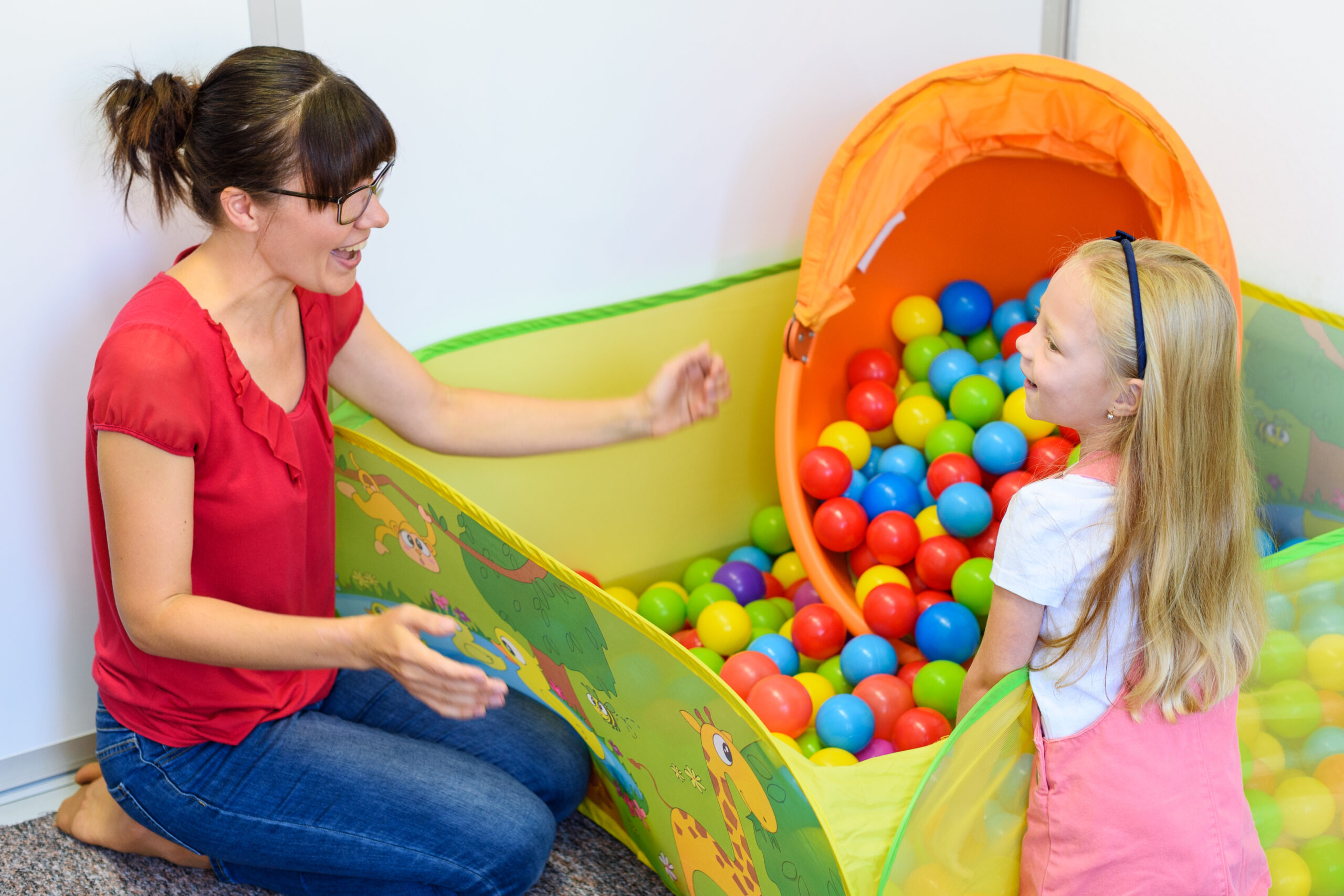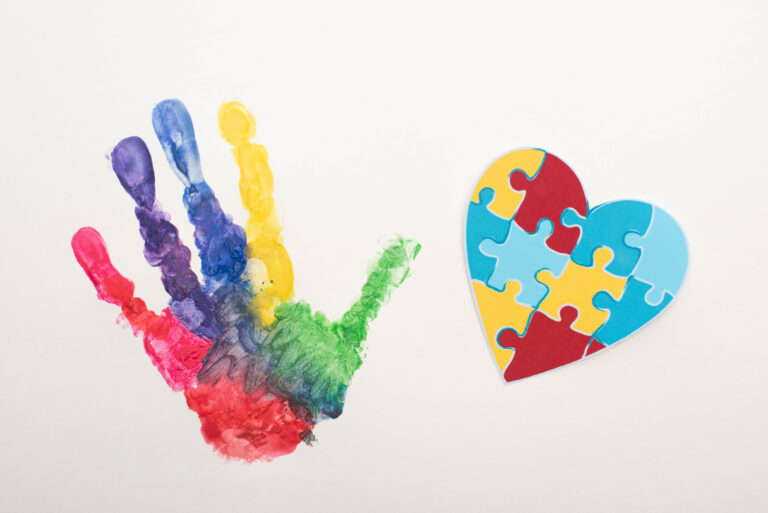Occupational therapy for autism: The powerful benefits
What are the benefits of occupational therapy for autism? As a parent of a child with autism, navigating all of therapeutic options can be overwhelming.
One effective and widely recommended intervention is occupational therapy. Occupational therapy focuses on helping individuals participate in the activities that are meaningful to them.
Occupational therapy for autism, can be a game-changer, providing them with the skills they need to thrive in everyday activities. This comprehensive guide will delve into the benefits of occupational therapy for autism, offering insights and practical tips for parents.

Hi! My name is Marra and I’m a mama and a pediatric occupational therapist who has years of experience working with children with autism and helping their parents navigate the ups and downs of child development.
I loved being a support person for parents learning about autism, sensory processing, and their child’s individual needs.
I would often recommend to families toys or sensory equipment to help improve their child’s sensory processing and developmental skills. I’d like to share all of the powerful benefits of occupational therapy for autism with you.
This post is all about the amazing benefits of occupational therapy for autism. So join us on this adventure into the world of occupational therapy and equip yourself with the knowledge and tools to make a significant impact in the life of a child.

Understanding Autism and Occupational Therapy
Autism Spectrum Disorder (ASD) is a developmental disorder that affects communication, behavior, and social interactions. Each child with autism is unique, with their own strengths and challenges.
Occupational therapy is a holistic healthcare profession tailored to meet the individual needs of each child, making it an effective approach for addressing the diverse range of difficulties faced by children with autism.
Occupational therapists (OTs) work with children to improve their ability to perform tasks in their daily living and working environments. They use a variety of techniques and activities to enhance motor skills, sensory processing, social skills, and cognitive abilities.

Key Benefits of Occupational Therapy for Autism
Improved Sensory Processing
Sensory Integration: Many children with autism experience sensory processing difficulties, where they might be overly sensitive or under-sensitive to stimuli.
OTs use sensory integration techniques to help children respond more appropriately to sensory input. For instance, an OT might use swings, trampolines, or textured materials to help a child better process sensory information.
Customized Sensory Diets: OTs develop personalized sensory diets that include activities designed to provide the right amount of sensory input to help children stay focused and calm.
These activities can include brushing, joint compressions, and using sensory bins filled with rice, beans, or sand to help children regulate their sensory experiences.

Enhanced Motor Skills
Fine Motor Skills: Occupational therapy for autism may include activities such as cutting with scissors, writing, and buttoning clothes are targeted to improve dexterity and hand-eye coordination.
OTs often use fun and engaging tools like playdough, puzzles, and pegboards to strengthen fine motor skills.
Gross Motor Skills: OTs help children develop skills like jumping, running, and climbing, which are crucial for physical development and play. Activities might include obstacle courses, balance beams, and ball games to improve coordination and strength.

Improved Social Skills
Social Interaction: Through play and structured activities, occupational therapf for autism teaches children how to interact with their peers, understand social cues, and develop friendships. Group therapy sessions and social skills groups are often used to create a safe environment for practicing these skills.
Communication Skills: Occupational therapy for autism often incorporates techniques to enhance verbal and non-verbal communication, helping children express their needs and feelings effectively.
Tools such as picture exchange communication systems (PECS) and social stories can be used to support communication development.
Improved Daily Living Skills
Self-Care: OTs assist children in learning essential self-care tasks such as dressing, feeding, and grooming, promoting independence with daily activities. They may use step-by-step instructions, visual aids, and adaptive equipment to teach these skills.
Routines and Transitions: Children with autism often struggle with changes in routine. OTs work on building flexibility and coping strategies to manage transitions smoothly. Techniques such as visual schedules, timers, and social stories can help children understand and anticipate changes.

Cognitive Development
Problem-Solving Skills: Activities designed to improve cognitive functions, such as memory, attention, and problem-solving, are integral to occupational therapy for autism. Puzzles, memory games, and sequencing activities are commonly used to enhance these skills.
Executive Functioning: OTs help children develop skills for planning, organizing, and completing tasks, which are vital for academic and daily life success. Strategies might include using checklists, planners, and time management tools.
These adaptive techniques can really make a difference when they are implemented into daily routines, helping children become more independent at more complex tasks.

How Occupational Therapy Works: An In-Depth Look
Occupational therapy for autism involves a comprehensive holistic assessment and individualized treatment plan. Here’s a deeper look into how OTs work with children:
Assessment and Evaluation
Initial Assessment: The first step in occupational therapy is a thorough assessment to understand the child’s strengths, challenges, and specific needs. This may include standardized tests, observations, and interviews with parents and teachers.
Goal Setting: Based on the assessment, the OT, child, and their family collaborate to set specific, measurable goals tailored to the child’s unique needs.
These goals are designed to improve functional abilities and enhance the child’s quality of life. Occupational therapy takes a client-centered approach so it is important that the goals are meaningful to the child and family.
Individualized Therapy Sessions
Tailored Interventions: Therapy sessions are customized to address the child’s goals. Sessions may include a mix of play-based activities, sensory integration techniques, and skill-building exercises.
Parent Involvement: Parents are encouraged to participate in therapy sessions to learn techniques and strategies that can be used at home. This collaborative approach ensures consistency and reinforces the skills being developed in therapy.
Use of Adaptive Equipment
Sensory Tools: OTs use a variety of sensory tools such as weighted vests, fidget toys, and sensory swings to help children with sensory processing issues.
These tools can be used during therapy sessions and integrated into the child’s daily routine. Some of these tools can be used at home or at school as well to help improve sensory regulation and function.
Adaptive Devices: For children with motor challenges, adaptive devices such as special utensils, dressing aids, and writing tools are used to promote independence in daily activities.
School-Based Occupational Therapy
Integration in School Setting: Many children with autism receive OT services in their school environment. School-based occupational therapy for autism work on skills that support academic success, such as handwriting, attention, and organization.
Collaboration with Educators: School-based OTs collaborate with teachers and other school staff to create supportive learning environments and implement strategies that help the child succeed in the classroom.

Practical Tips for Parents
Collaborate with Your Occupational Therapist
Active Participation: Attend therapy sessions when possible to observe techniques and ask questions. The more you understand about the therapy process, the better you can support your child at home.
Regular Communication: Maintain open lines of communication with your child’s OT. Share updates on your child’s progress and any challenges they may be facing. This helps the OT adjust the therapy plan as needed.
Create a Structured Environment
Consistent Routines: Establishing and maintaining consistent routines can help your child feel secure and understand what to expect. Use visual schedules to outline daily activities and transitions. OTs are great at helping children and parents create structured routines at home.
Clear Instructions: Give clear, concise instructions and break down tasks into manageable steps. Visual aids, such as picture cards, can be very helpful in guiding your child through tasks.

Incorporate Sensory Activities at Home
Sensory Play: Integrate sensory play into your child’s daily routine. Activities such as playing with water, sand, or slime can provide valuable sensory input. These activities
Calming Strategies: Identify and use calming strategies that work for your child. This might include using a weighted blanket, listening to soft music, or spending time in a quiet, dimly lit room.
Encourage Independence
Practice Self-Care Skills: Allow your child to practice self-care skills, such as dressing and feeding themselves, even if it takes longer. Provide support and encouragement, but let them do as much as they can on their own.
Celebrate Achievements: Celebrate your child’s achievements, no matter how small. Positive reinforcement boosts their confidence and motivates them to keep trying. I love that occupational therapy focuses on and celebrates the small wins.
Promote Social Interaction
Facilitate Playdates: Arrange playdates with peers and siblings to provide opportunities for social interaction. Start with short, structured playdates and gradually increase the duration and complexity.
Model Social Behaviors: Model appropriate social behaviors and interactions. Role-playing social scenarios can also effectively teach your child how to respond in different situations.
Occupational therapy for autism is amazing and can lead to big improvements in many areas. It offers a wealth of benefits for children with autism, helping them develop crucial skills for success in all areas and fullfill their occupational potential.







